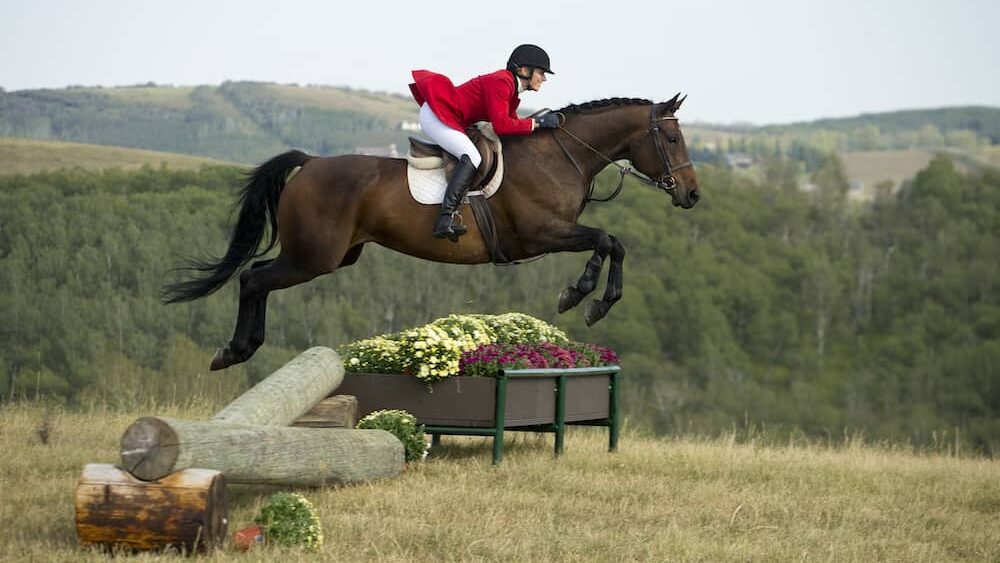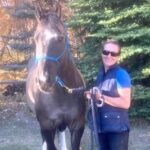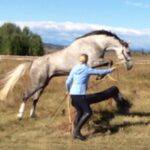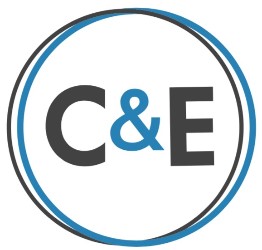
Be the rider your horse needs you to be
Ninety percent of the time, training issues are physical issues of the horse or rider! We equestrians spend an exorbitant amount money and time on vets, massage therapists, chiropractors, farriers, trainers, energy workers, you-name-it, to get our horse just right, but what if we are still missing working on the most important thing — the lynchpin — the rider.
Diagnostically I love identifying the part we play as riders. The process of unwrapping a rider’s layers of physical hindrance (through mindful bodywork) can oftentimes make it obvious how the horse’s problems began. Once you see it, then you start the journey of awareness to self-correction. During the time of retraining your body to maintain a correct position and to release what no longer serves you, you will learn how holding yourself ultimately affects everything in life… including your horse. Knowing, however, isn’t the same as understanding, and as I pointed out in part one of this blog, this is a journey, not a quick fix. You must work beyond the choreography into the “feel” of your physical work. The way we do with our ride or groundwork with our horse.
It’s already been established how we have unique bodies and different postural imbalances, so now it’s time to understand each body in more detail.
Posture shows our intention to the horse, as our energy and intention in our body dictates speed and rhythm. You can improve your riding comfort, and your horse’s, as well as your form, when you improve your posture — something fundamental in Pilates work. Consider posture as a refinement of oneself, with ideal alignment in a straight line from ceiling to floor: head squarely over the shoulders, shoulders over the hips, hips over the knees, and knees over the toes.
As you uncover the particular patterns of movement and posture that affect your particular body mechanics, you can then accomplish a truly great ride, one in which you move in tandem and grace with the horse. This will always start with proper alignment of the rider.
Take a moment for reflective and honest self-evaluation — to assess some purely practical aspects that can affect your riding performance:
Can you feel your deep stomach/core muscles lifting as you trot?
Being able to do this gives you and the horse gets the shock absorption you require, and allows you to give a clear aid, then get out of the way of the horse.
Can you feel the pads of your feet on the stirrup?
Pilates foot-work exercises address alignment, mobility and strength that begins in the foot, but affects your whole posterior chain.
Do you experience movement in your ankles?
Can you relax your heel, increasing the flexion but keep weighted on the ball of your foot?
Calf muscles must feel the horse but not grip or hang away from the horse.
External rotation from hip encourages a slight turn-out on toes to bring calf next to horse and into functional positioning.
Do you experience tension in inner thighs?
This unnecessary gripping can be released to allow development of new muscle memory.
Are your hips mobile enough, with appropriate range of motion?
Stretching and positioning awareness off the horse will increase both.
Do your ribs move? Do they collapse and expand equally on both sides? Are your arms relaxed at your side, not braced or holding tension through the rein to the horse’s head?
The upper body reflects what is happening lower down in the body and is often mirrored in the horse.
Do your legs and arms move independently? Or do other body parts, like your entire pelvis, move too?
While the core holds you up, your levers should be able to move without dislodging your centre. Disassociating the femur from the hip is critical.
Where’s your head?
Your spine follows your eyes, so if you’re looking down, you’re collapsing your upper body forward, taking the head and horse off balance. When your body can keep good posture throughout the ever-changing movement of the horse, you will end up with less strain or tension.
What’s hurting?
Back pain, or dysfunctional arm or leg movement, can be a huge factor in riding so working on your posture in Pilates can be diagnostic in your journey to pain-free and functional riding.
Now if I had to really narrow it down to give just two examples (or this would be the longest blog ever!) of gains to you and your horse from Pilates:
- Clarity for your aids: vague aids result in a dulled horse. There is nothing vague about the Pilates method; it’s all about precision and control. The attention to detail you learn from Pilates work can be translated to your horse.
- Focus: one of the main principles you learn through your Pilates is about staying in the moment and being totally present. (Present = gift, hence the name!)
So when you’re with your horse, you can call on that deep connectivity between mind and body, and clearly translate your messaging to the horse, which will result in correctly executed movements. Just as important is acceptance that communication is a two-way street, an exchange of information. You cannot simply send it; you must be ready to receive, listen and understand. If you can stay open to the possibilities that come from the extraordinarily small movements born from clarity and focus, for example, the resulting control gained can make a huge difference.
To be honest, it wasn’t always this way for me and will still take continued work. I now relish and embrace slowing down to feel more deeply, to notice and appreciate more detail while working on a sometimes seemingly insignificant level. However, I (along with many others) feel without a doubt that this is the way forward because putting these small gains together brings success.

Amy Krazizky
Pilates Teacher
***
Tracey and I have been training together for a while now; I strongly believe that we were meant to cross paths. She has helped me translate what I do with human clients through Pilates body work, into my own training with my horses and their body work. The result has been a positive development for me — a new specialization with equestrians. Please read on to hear from Equestrian Trainer Tracey Skinner ……
***
Tracey’s view — Being an objective observer of your horse
Like us, horses all have unique bodies, with their own physical imbalances, strengths and weaknesses. Which really makes equestrian activities dynamic and challenging on so many levels. We are not just dealing with one body, and goodness knows, that is trying enough, we are dealing with two. Both our own physical-mental-emotional body and our horse’s. For me, there is no other way to look at my equestrian endeavours except as a life-long journey to awareness of our whole self and of the whole horse.
In the second part of her blog “Being the rider your horse needs you to be” Amy Krazizky asks us to reflect on, and honestly evaluate, ourselves. We should do the same with our horses. To really be connected with our horses, we need to have a keen awareness of what is happening in our horse’s bodies as much as in our own bodies. We can learn so much about our horse’s tendencies and patterns by observing them from the ground.
Take the time to be an objective observer of your horse. Observe without judgement. Accept your horse for wherever they are at in the moment. You’ll be amazed at what will show up. Keep an eye out for the small things that may not seem so significant but end up as extraordinarily valuable information. It might help you solve a training issue or display a missing piece of the puzzle that has been holding you back from achieving a goal. This is a great time to pull out your journal, clear your mind and just observe. Write down what you see, get it all down, whether you think it matters or not.
Start by watching your horse in their own environment. Observe your horse eating, grazing in the field, or just munching in the stall or paddock. Do they have a tendency to always lead with one front leg over the other? This will tell of a desire in your horse to carry more weight on one side than the other.
Watch your horse out in the pasture, or loose in the arena: do they favour one direction or one canter lead over the other? Do they have a tendency to crossfire/disunite in the canter? How about their lead changes? Are they clean — changing both front and hind at the same moment, or is their timing off? Canter leads and changes reveal so much about the natural balance of the horse.
When your horse is standing at rest, do they always cock the same hind leg (showing a desire to carry their weight on one side over the other)? Does your horse naturally stand square with equal weight in all four legs? If not, is there a pattern to where they prefer to hold their weight?
Facing your horse head on, do you see symmetry in musculature in their chests, shoulders? Or is one side more developed than the other? What about looking at your horse from behind — are they more built up on one side than the other?
A great way to observe your horse is to stand on a stool directly behind them and see their whole body from above. Is their spine in alignment? From this angle you can see if the pelvis is tilted, if shoulders are not aligned, if a twist exists in the poll. I have a horse who has a twist in her spine that explained why she always felt like her right shoulder was falling in, no matter what exercises I did to correct it! If I’d never observed her from that perspective, I probably would not have discovered the root of the issue. Having that knowledge, I adjusted how I trained her, with along with regular bodywork to help counterbalance the physical weaknesses created by the twist.
Another great way to observe your horse is on a circle. First from the inside of the circle, then ask a friend to send them out on the circle so you can observe from the outside. Is your horse falling in? If your horse’s head is tipped to the outside, chances are they are falling into the circle. If you have a tight pull on the line, they are falling out, and definitely not mentally with you. Is your horse bending through the rib cage? Are they tracking up? Their hind foot should be stepping at least into the track of the front. Are their tracks aligned, or are they stepping outside or inside of the front track?
When a horse is in balance on a circle, they should be holding the arc of the circle from nose to tail, their front right and hind right staying on the same track, and the same for the front and hind left. Watching their foot fall is a good way to see if and where they are falling out of alignment. Are they relaxed through their top line? Looking to stretch down, relaxing the neck and lifting their back? Or are the bottom neck muscles more developed than the top? (A telltale sign that your horse has spent more time being tense and inverted than relaxed and working through their body.)
What about their poll? Is it in alignment or is there a slight twist? I have observed that horses carry a tremendous amount of tension in their polls so it is well worth doing some very precise, slow and quiet work to help them release in that area. Sometimes, having them give in the poll is all it takes for their whole bodies to let loose and come into balance.
What about your horse’s “eye”? Is it on you? Or focused elsewhere? The horse’s eye is a huge source of information for where they are, mentally and emotionally.
Many of the imbalances that you might observe are patterns that need to be broken. These patterns can stem from compensation from an unsoundness in the horse, an old injury, a rider’s own imbalances, or more times than not, our own lack of awareness with what is really going on with our horses mentally, physically and emotionally.
Understanding our horse’s tendencies — when not being ridden — can help us understand what is happening when we do ride and help us create a better, positive and progressive training program for them. If our horses naturally go with better balance on the ground than they do when we ride them, it’s a giveaway that the issues lie in our own bodies. A common example is a rider struggling to pick up a specific canter lead, when the horse running free has absolutely no problem picking it up. The imbalance of the rider is most likely putting the horse out of balance and preventing the horse from picking up the wanted lead.
Awareness is the first piece of the puzzle. Understanding what is going on in our horses’ bodies plays a vital part in developing a successful relationship and progressive training program with our horses. And yes, there is so much we can do for our horses on the ground that will help them with better alignment, better body mechanics and finding self-carriage. With good groundwork, we can be eyes on the ground for our horses. It allows us to get a sense of where our horses are at — physically, mentally and emotionally. With this knowledge we can make a training plan to develop an overall well-balanced horse. Taking this time on the ground will set you up for success in your future rides.
Of course, specific and focused groundwork exercises can help my horse with her twisted spine become more supple, stronger and carry herself better, but they will not take the twist out of her spine. But my having the awareness will make sure she doesn’t regress and revert back to poor self-carriage and unsoundness. This is exactly what my practice of Pilates does for me. I am now at a place where I can recognize when my body wants to fall back into old patterns. Not only do I have an awareness of my body I never had before, but I also now have the tools to counter those tendencies. Observing your horse will give you an awareness of patterns that don’t serve the horse’s overall well-being. Practicing precise and productive groundwork will give you the tools to counter those tendencies and replace them with better habits.
Just as I have discovered with myself and my own body, nothing is a quick fix for a horse either. It is a practice, and, even more so, it is a journey. It is all about making small changes, breaking down old patterns and replacing them with new better habits that, over time, will lead to immense positive changes.

Tracey Skinner
Equestrian Trainer
